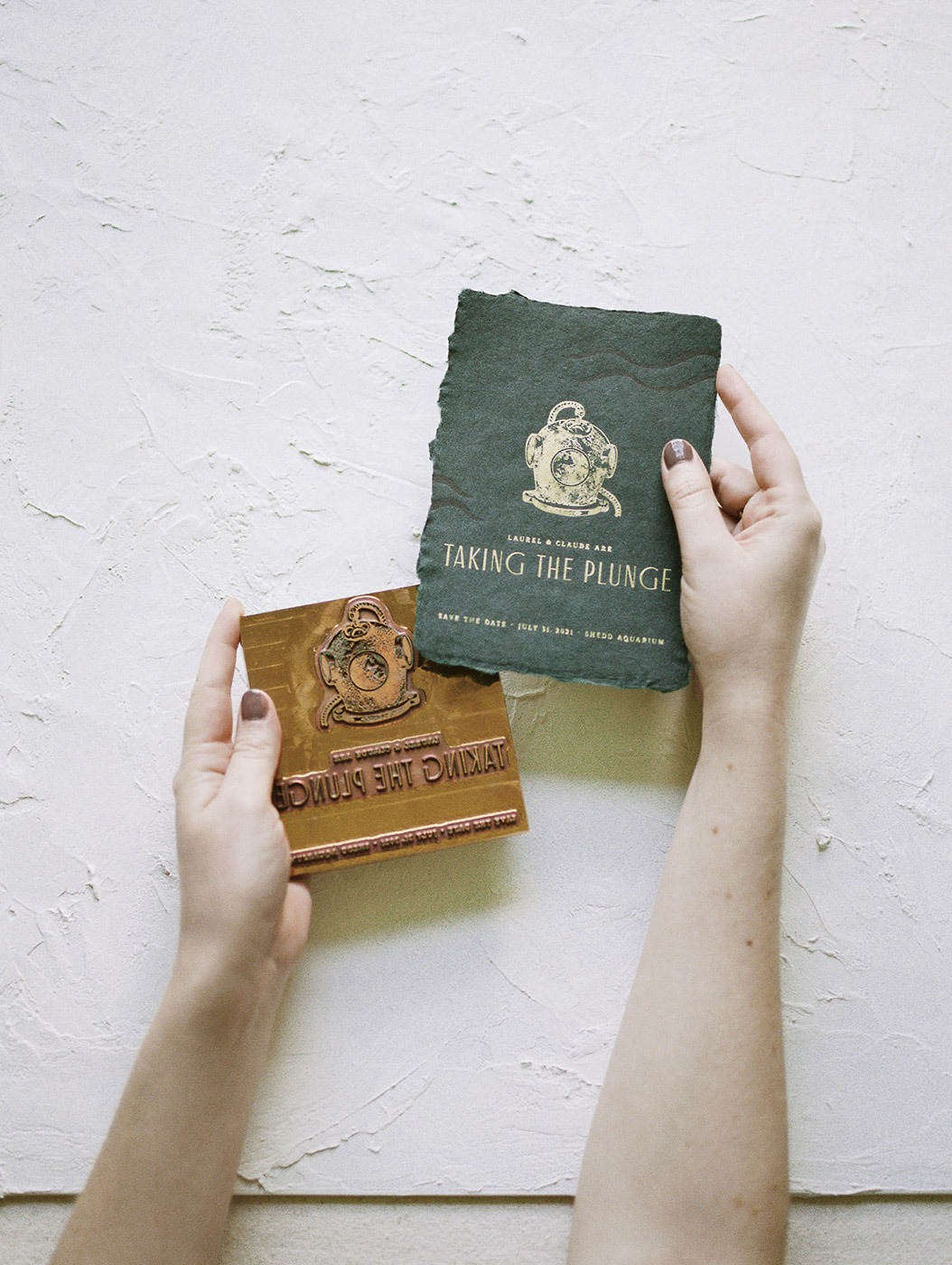
In my years of running a wedding stationery and design company, countless things have changed. Not only in the world of creative entrepreneurship, but in the wedding industry as well! Algorithms are always shifting, wedding trends come and go. But there’s one persistent question I hear often: What’s the difference between all of these print methods, anyway?
When engaged couples inquire about working with us on their wedding invitations, step one is completing our Welcome Questionnaire. This form has all sorts of fun and important questions to get the ball rolling… but, like clockwork, I’ll often receive blank looks when asked about the printing itself.
“What kind of print method do we want…? I don’t know. Isn’t there just one? Like how many different ways could there be to get a design on paper? I just want something nice!”
And I get it! The average person might only have printing experience through their fancy office printer, or even an at-home inkjet. Terms like “letterpress,” “CMYK,” or “hand-printing” are likely to be confusing to those who have never heard of them before. How are you supposed to know if you want something if you don’t even know what it is, right?
Today I’m sharing the three distinct printing methods we specialize in here at Paper & Honey®: letterpress printing, hot foil stamping, and digital printing.
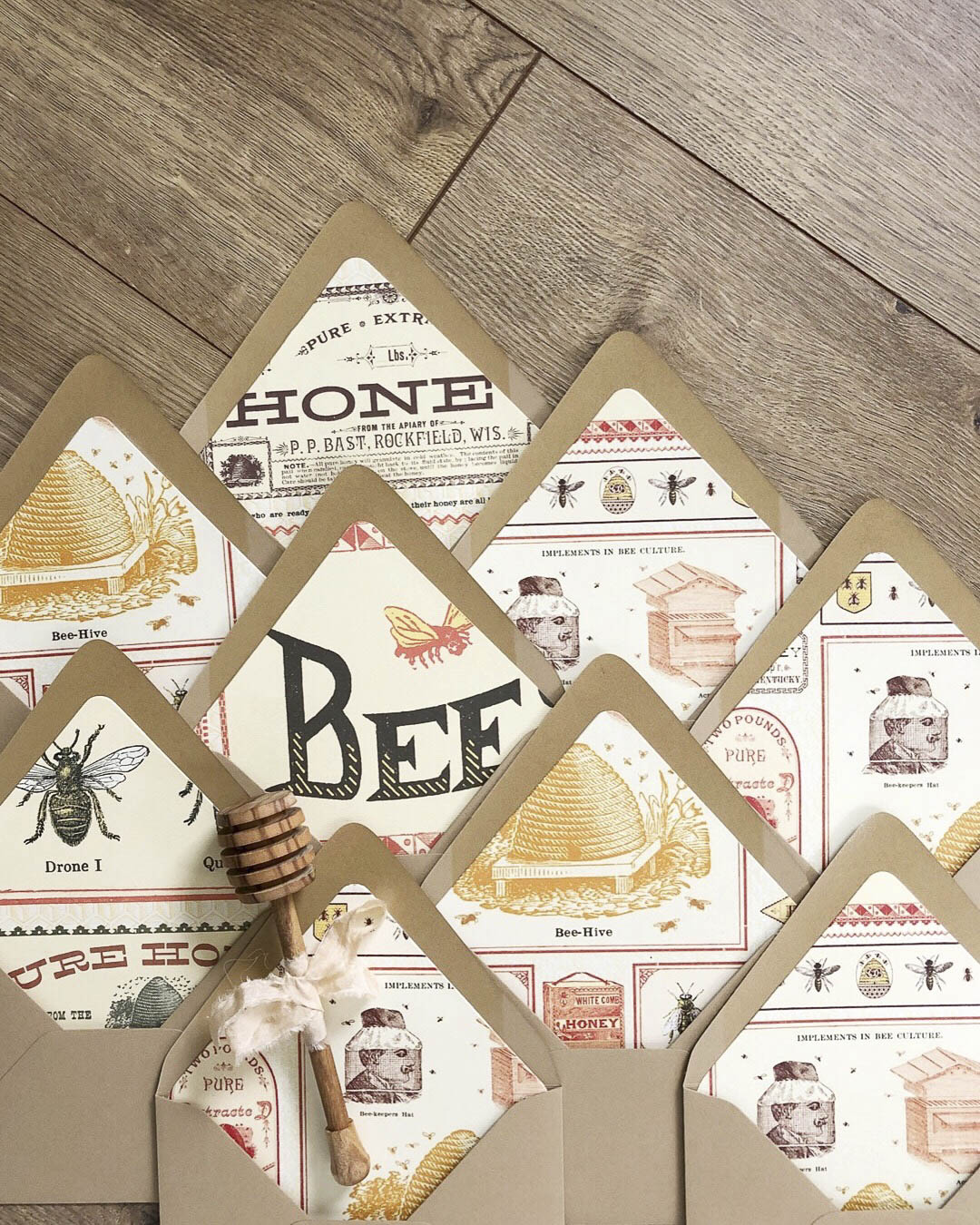
Print method #1: Digital printing ($)
Digital printing is the most widely-known print method and one you likely interact with every day. The vast majority of mail you pull from your mailbox is likely digitally printed — and, spoiler alert, why I’m such a fan of how special letterpress feels!
How it’s made: Digital printing utilizes the CMYK model, or “cyan magenta yellow black.” If you’ve ever switched out ink cartridges in your home or office printer, you’ll probably recognize that each cartridge is dedicated to one of these colors! The printer applies each of these inks in layers on top of one another in tiny dots, creating an endless amount of colors.
What it looks and feels like: Because the ink sits on top of the paper, digital printing sits flush with the surface. There is no impression.
Pros: Digital printing is the easiest and most accessible print method. Digital printers are widely available and allow for quick turnaround times. This is the most inexpensive printing option. More colors
Cons: Each printer is different, and it can be really difficult to have any kind of exact color consistency from printer to printer (or even print to print from the same machine!). While digital printing is more common and available at a much lower cost, it also comes with the caveat that it FEELS common. It doesn’t necessarily have that special, luxurious je ne sai quoi of fine print methods like letterpress and foil.
Other considerations: Because digital printing is made by feeding paper through modern machinery, we have some limitations on the materials we’re able to print on. For example, we don’t offer digital printing on handmade paper — it’s difficult for the printer to grab onto the inconsistent and organic edges of the paper, resulting in a bunch of wonky and smudged prints.
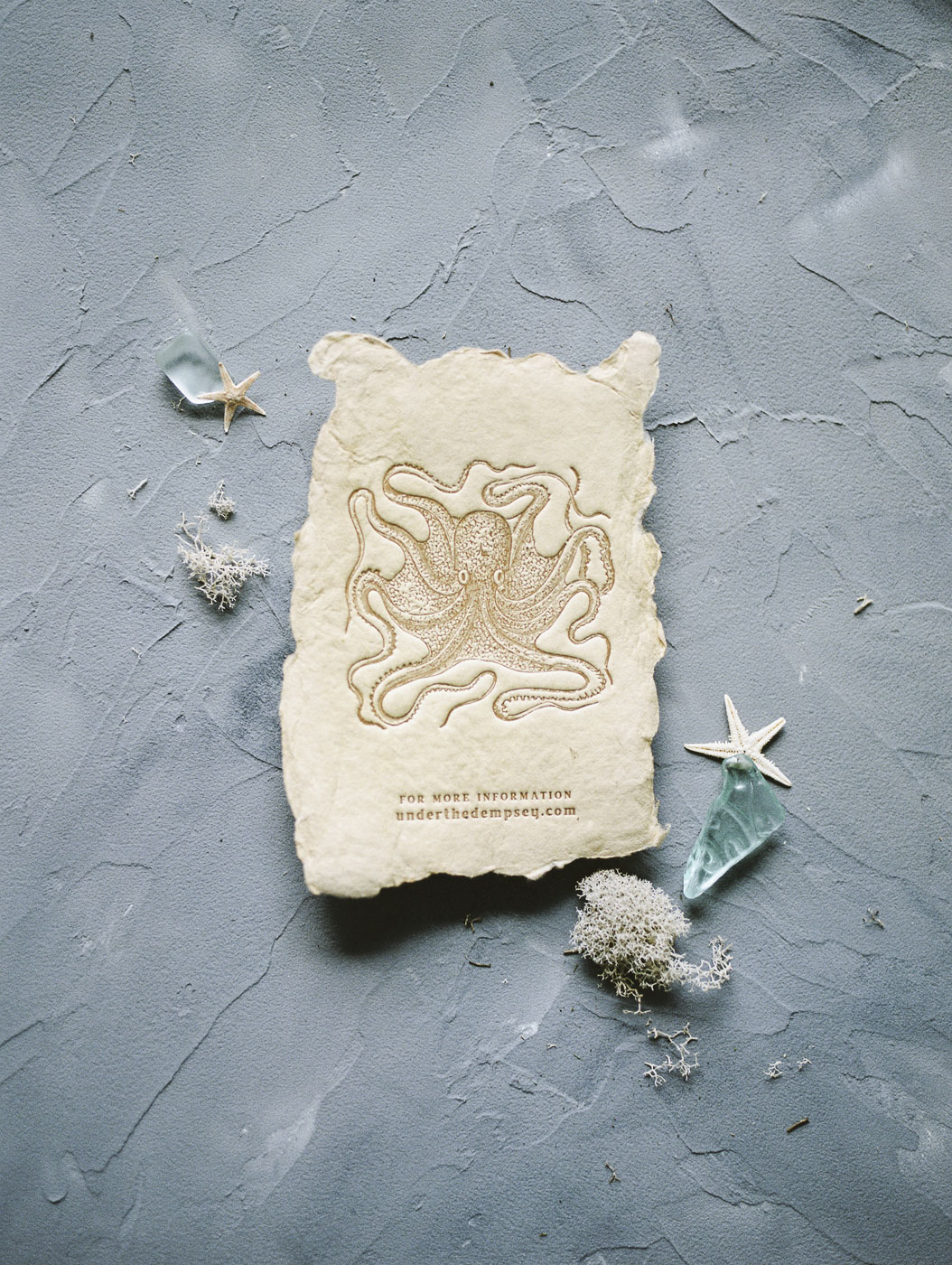
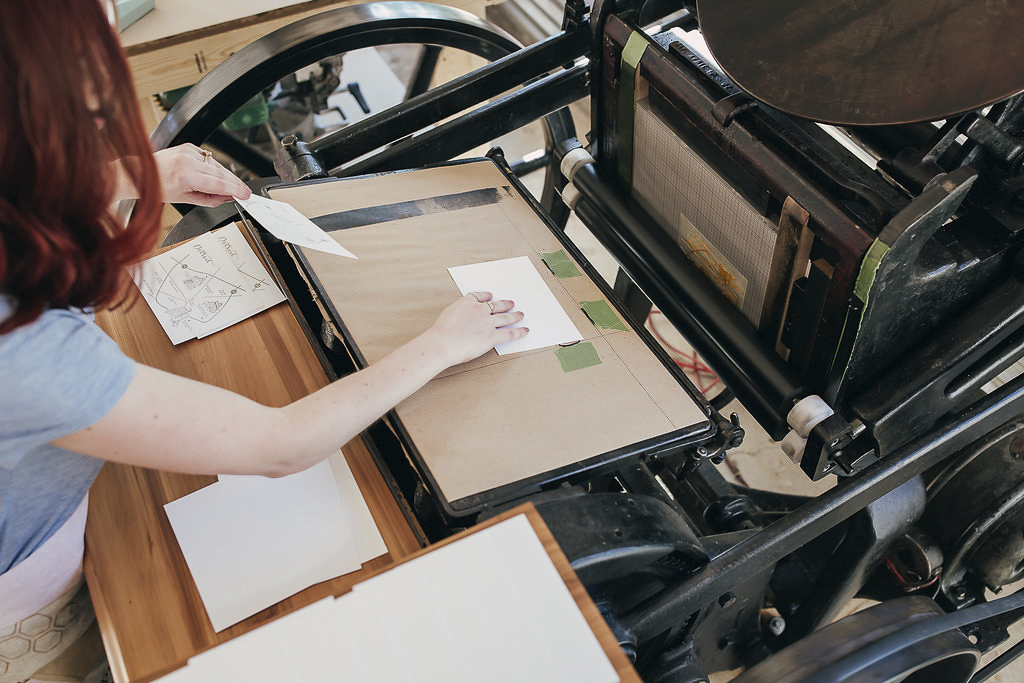
Print method #2: Letterpress printing ($$)
Letterpress printing is a fan favorite around here, and the print method we specialize in. It has roots all the way back to 1440 when Johannes Gutenberg invented the very first printing press. Our press Winnie is around 100 years old and still works like a dream. In this technologically-driven age, there’s just something so charming about antique cast iron machinery creating heirloom paper. We can’t get enough!
How it’s made: Modern letterpress printing can be made with photopolymer plates, instead of the traditional lead typesetting. Once the plate is applied to the press along with hand-mixed Pantone ink, rubber rollers hit the ink disc, roll over the design plate, and the entire machine clamps together in order to push the plate into the paper, physically stamping your design into the sheet. This is quite the labor-intensive process! Not only does the press require full set-up and breakdown for each ink color printed, but each individual sheet of paper is fed into the press by hand. The finished prints are not only textural and luxurious, but unique, too — no two prints are the same.
What it looks and feels like: PERFECT. Ahem — my adoration for letterpress got ahead of me. If you’re looking for paper that is visually interesting, textural, and has depth, letterpress printing is for you. At Paper & Honey® we prefer the deepest of impressions!
There’s nothing quite like the shadows and depth of letterpress when the sun catches it *just* the right way.
Color availability: You may notice letterpress referred to as “1-color” or “2-color letterpress printing.” Each color is considered a “run” through the press. Because we print with an antique machine that prints one ink color at a time, there is one photopolymer plate for each color as well. For example, if I were to make an illustration of a peony as a 2-color print, we could have two separate plates: one plate with the steam and leaves, printed in green; and one plate with the petals, printed in blush. This is considered two runs through the press, and means the press itself is set up and broken down twice.
Pros: WHERE TO BEGIN. There is just something truly *special* about letterpress printing — something that sets it apart from the humdrum commonality of digital printing. I am obsessed with the deep impression, how no two letterpress prints are identical, and the artisan nature of the print method itself. Not only is the by-hand process of printing meditative and peaceful, but the results are delicious. Feeding sheets by hand allows us to easily work with materials like handmade paper as well.
Cons: If you’re after a multi-color-filled print, letterpress may not be for you. Because this print method utilizes a new photopolymer plate per print color, multiple colors can quickly add up cost-wise.
Other considerations: When considering letterpress printing and handmade paper specifically, design with a healthy margin in mind. Handmade paper can vary wildly from sheet to sheet in both size and thickness! These differences mean that the registration — or where the print “lands” on each sheet of paper — can also vary from sheet to sheet. To minimize crooked or off-center prints, try to avoid borders, straight lines, and designing too close to the sheet’s edge. Organic design is your friend here!
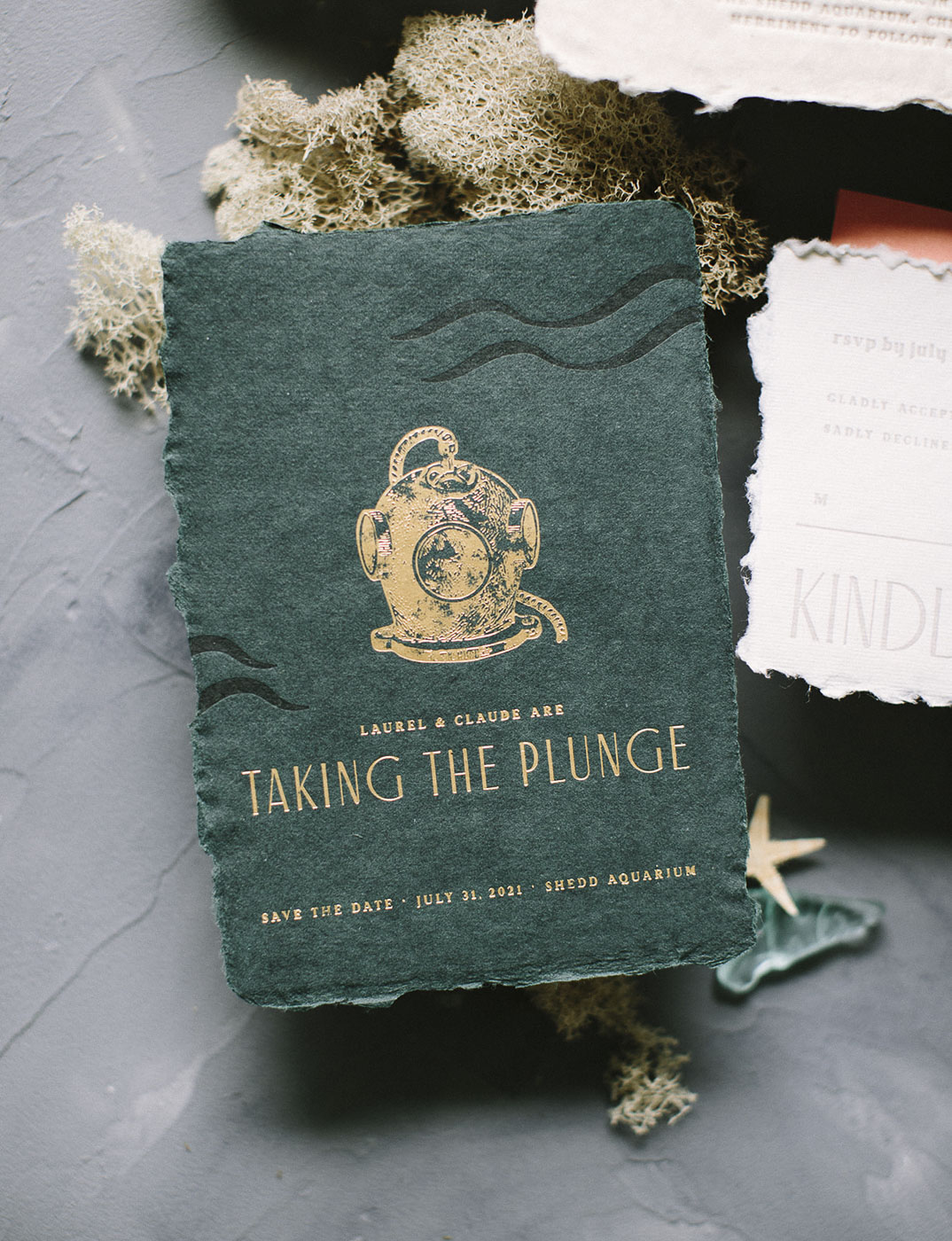
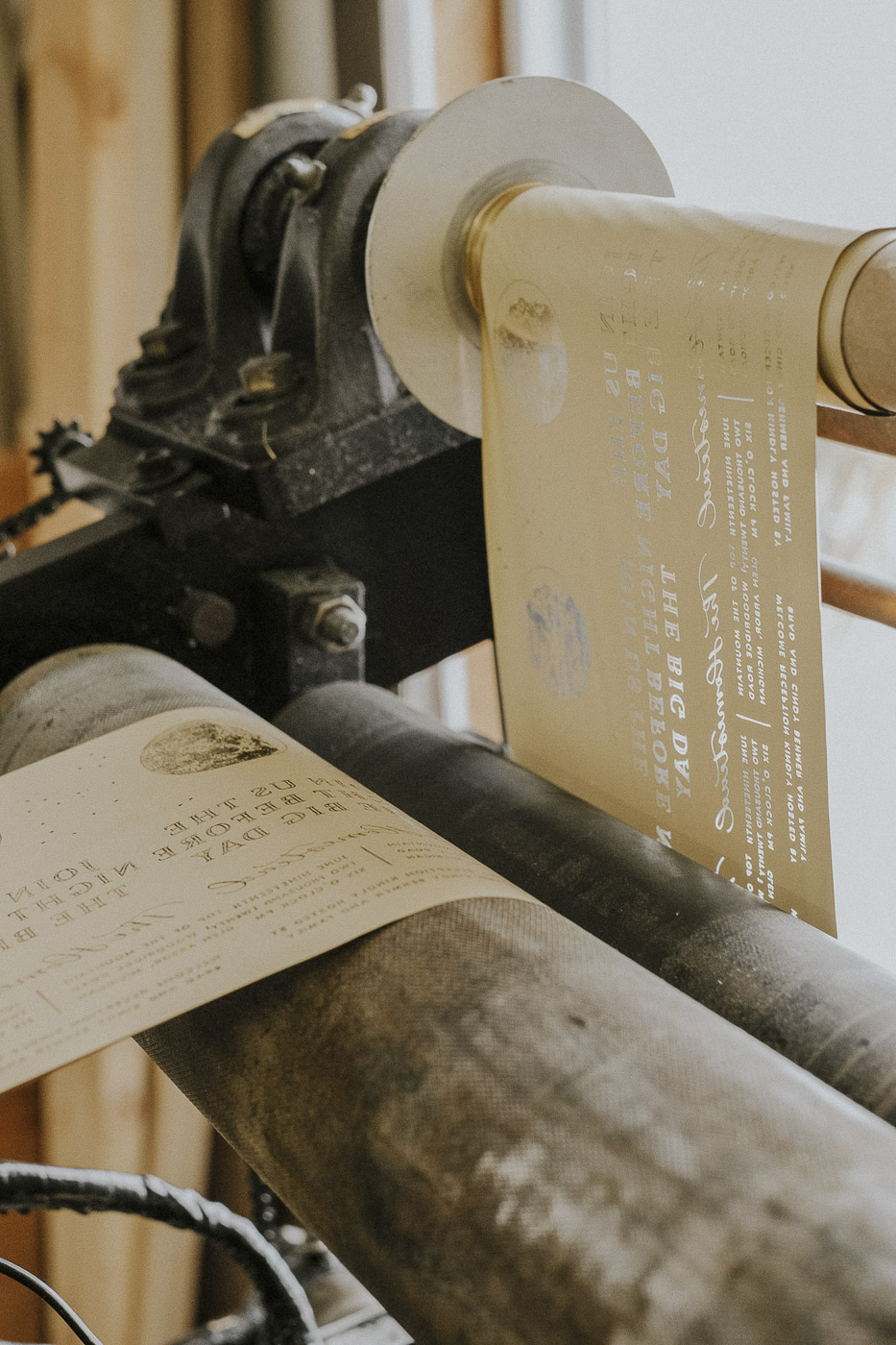
Print method #3: Foil stamping ($$$)
How it’s made: Foil stamping is not terribly dissimilar to letterpress printing. At the Paper & Honey® press shop we house two Chandler & Price presses for both print methods, though there are a few differences between Winnie and our foil press, Ol’ Girl. Instead of letterpress rollers, ink, and photopolymer plates, foil stamping requires heating components, rolls of foil, and designs engraved into copper dies. When printing, a roll of foil sits at the top of the press and is pulled over the copper die. The die is registered on top of an electric heating base, and that heat is what activates the foil to “stick” to the paper.
What it looks and feels like: If you’re after a true metallic that reflects light, foil stamping is for you. There is a slight impression though it’s not as deep as letterpress printing.
Color availability: Similarly to letterpress printing, an individual copper die is needed for each foil color printed. You’re probably familiar with gold, copper, rose gold, and silver foil, but the sky’s the limit! There are foils available in every color and finishing — rainbow, matte, and holographic foils included. (Dying for the day I can print something holographic!)
Pros: Foil stamping is how we achieve a true metallic. Have you ever tried to digitally print “gold”? Brown. It’s just brown.
Cons: The price point for this print method is higher, considering the costs of the copper dies and the labor-intensity of printing itself. We also can run into some printing issues when working with different materials. Sometimes the foil just doesn’t play nicely with a certain type of paper, and it requires a lot of troubleshooting (and under-our-breath cursing).
Other considerations: Don’t stop at one foil color! Foil stamping combined with letterpress printing can be especially extraordinary.
And there you have it! The three different print methods we offer at Paper & Honey®: digital printing, letterpress printing, and foil stamping.
Special thank you to Christina Harrison and Heather Nash for several photos seen in this post!